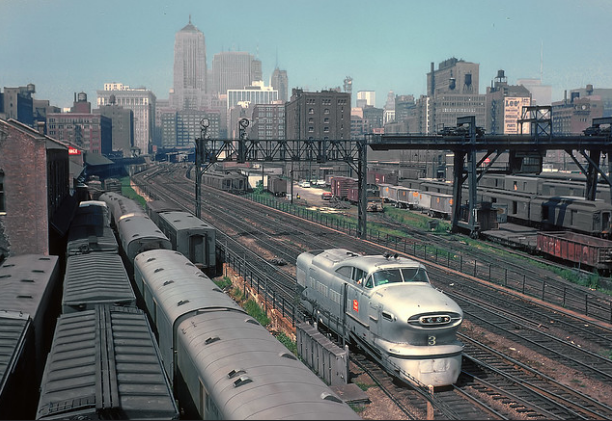Photo Gallery |
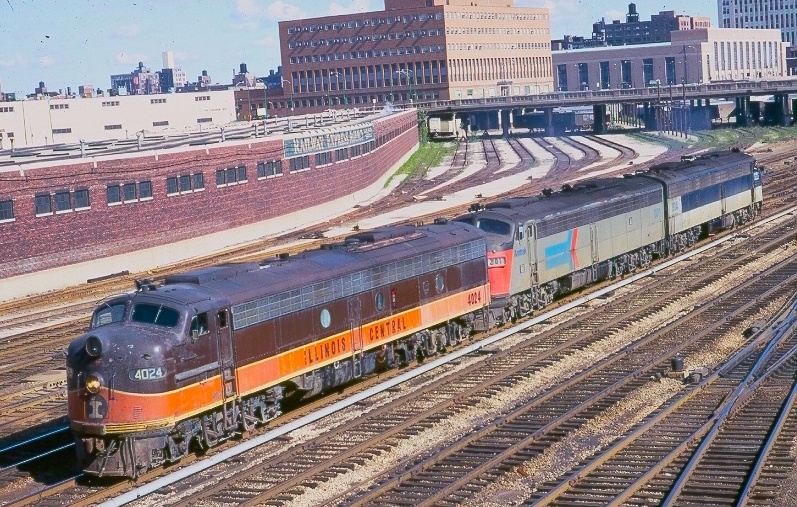
During the early years of Amtrak, the railroad's search for reliable and suitable passenger
equipment and locomotives was always a challenge. The passenger hauling railroad had begun
operation in mid-1971 with 286 E and F-units.The result was plenty of colorful trains
and motive power consists, as illustrated by this shot of three E-units backing into Union
Station on 8 October 1972. (R. Craig photo).
| 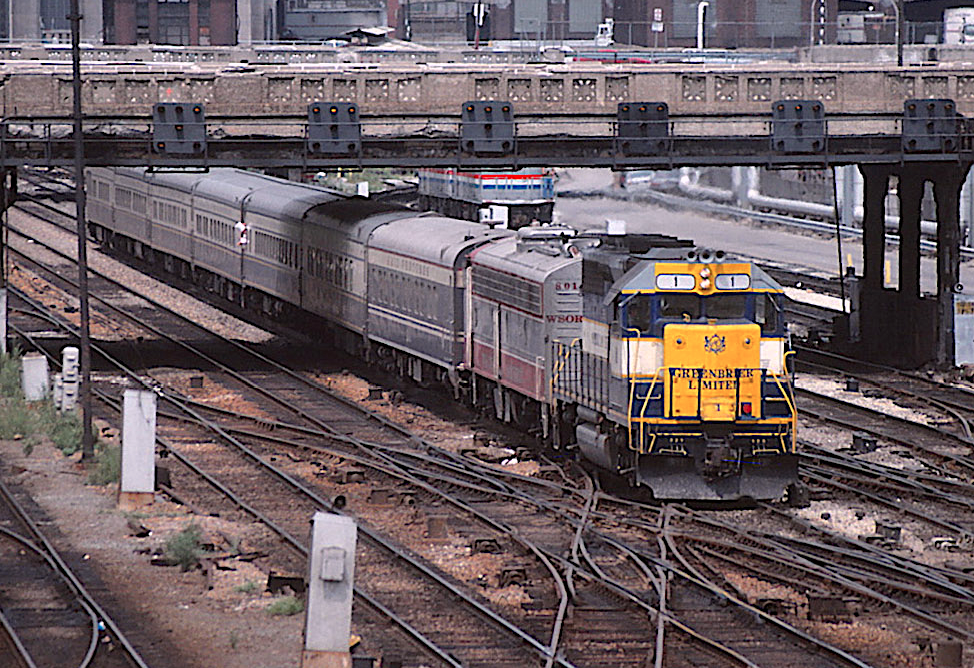
American-European Express was a privately owned service running Chicago, Washington,
Philadelphia and New York City. The all-sleeper train provided luxury accommodations and
meals similar to those of a four-star hotel. CSX rails were used between Chicago and the
Greenbrier Resort in West Virgina; Amtrak handled the train to and from New York. (R. Craig
photo, 3 September 1991)
|
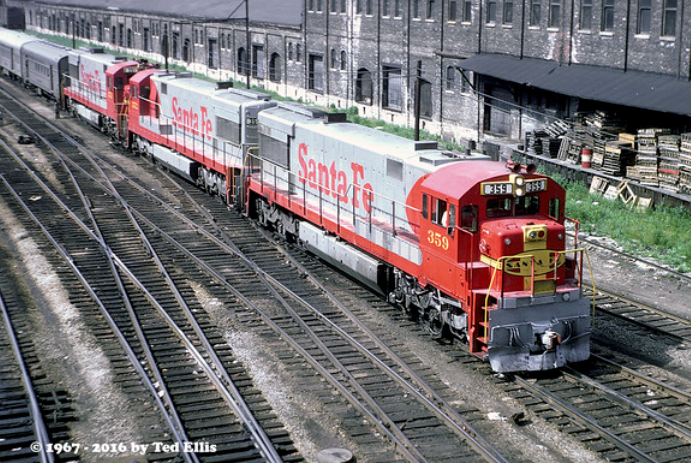
Atchison Topeka & Santa Fe's "Texas Chief" (Train 15) got a lot of attention prior to its
late afternoon departure from Dearborn Station on 18 June 1967. Newly delivered U28CGs would
be a common sight on the Chicago to Houston service. (Ted Ellis photo).
| 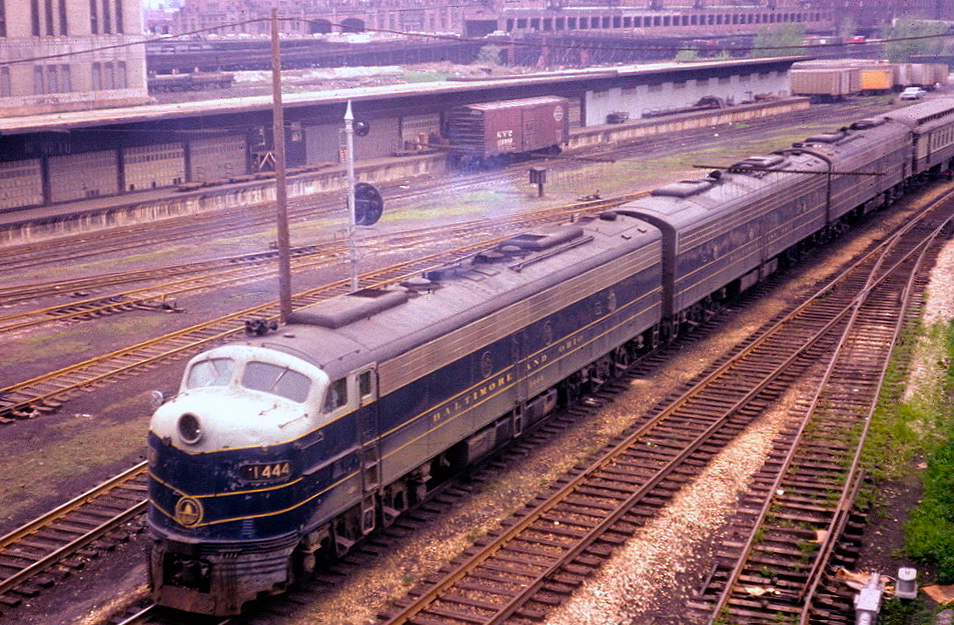
Given the classic set of E8A-B-A power and matched blue/gray/black corporate attire, this
Marty Bernard photograph appears to show Baltimore & Ohio's "Capitol Limited" (Train #5)
arriving at Grand Central Station on a May morning in 1964.
|
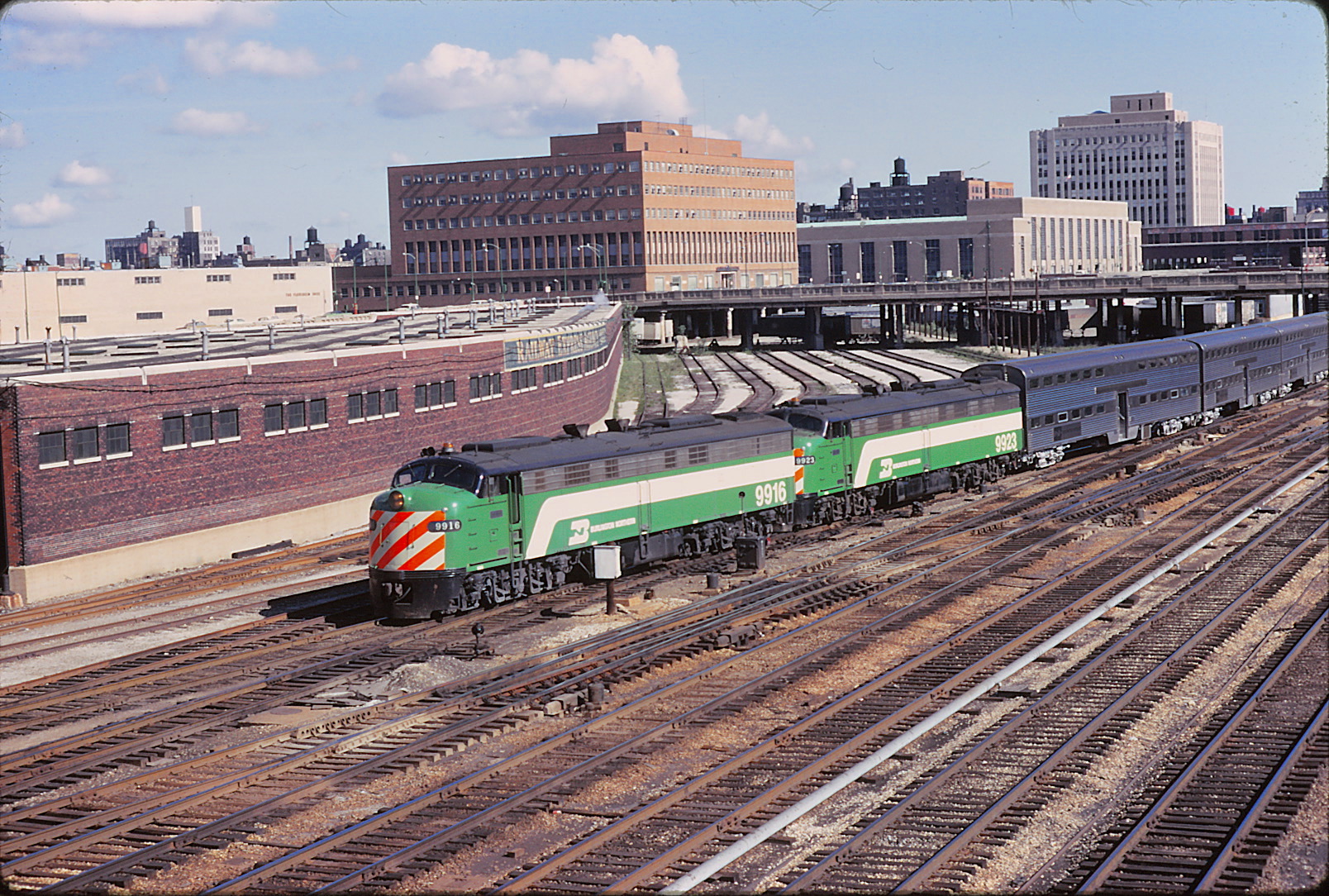 Two Burlington Northern E9AMs depart Union Station with an afternoon express
train on 29 May 1974. Funding to rebuild the 20-year-old E-units and for operation of the
commuter rail service came from the West Suburban Mass Transit Distric. (R. Craig photo)
Two Burlington Northern E9AMs depart Union Station with an afternoon express
train on 29 May 1974. Funding to rebuild the 20-year-old E-units and for operation of the
commuter rail service came from the West Suburban Mass Transit Distric. (R. Craig photo)
| 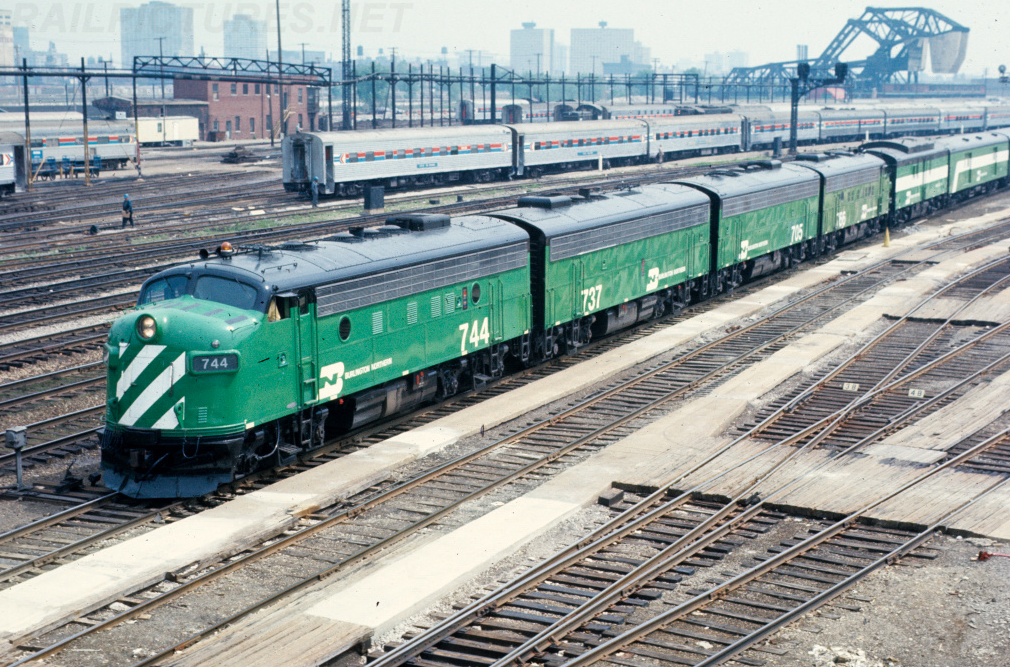
By the mid-1970s, very few railroads serving Chicago used F-units in passenger service, and
the Burlington Northern was not an exception. A rare officer special with a neat-looking set
of A-B-B-A F-units arrives at Union Station on 14 May 1977. (Don Crimmin photo).
|
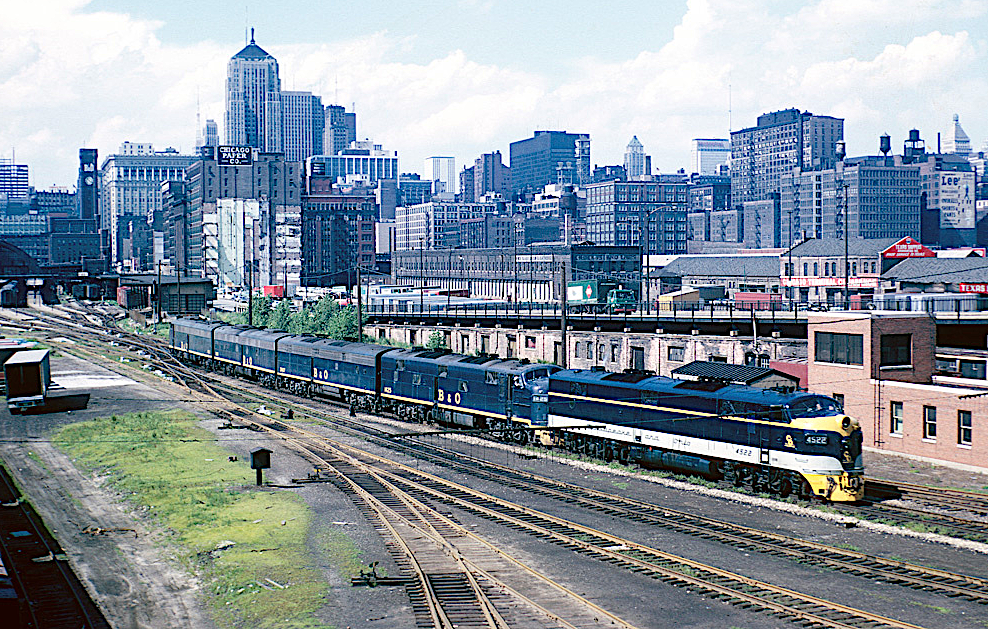
Photographer Ted Ellis captured this group of five E-units backing into Grand Central Station
in July 1965; the power is for two separate afternoon trains. Chesapeake & Ohio E8A #4522
will take the "Pere Marquette" (train #8) to Grand Rapids, and B&O Es will go east to
Washington D.C. (Ted Ellis photo).
| 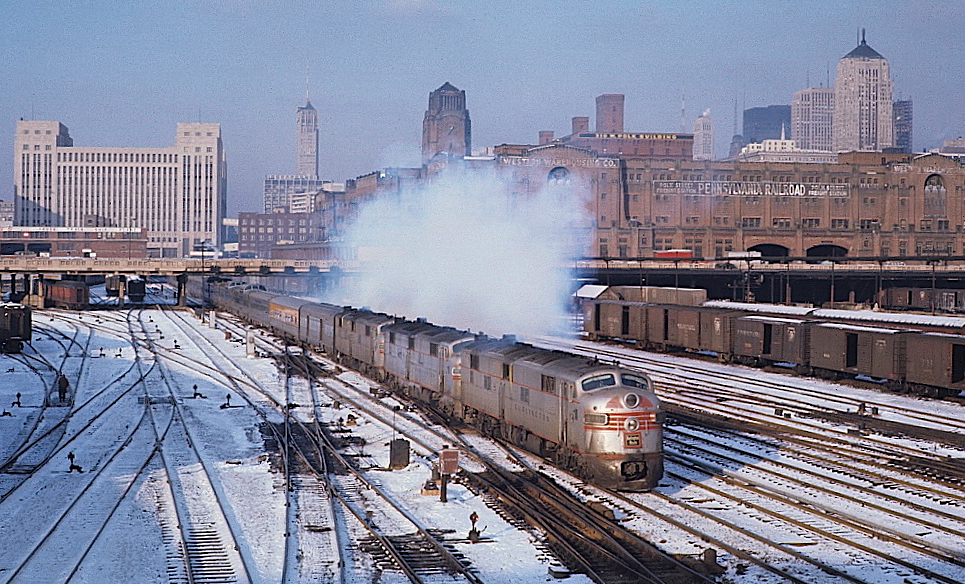
Three Chicago Burlington & Quincy E-units, which lead the famed "California Zephyr," signal
a departure from Union Station with a large cloud of blue exhaust. The Chicago's tall Board
of Trade Building is visible on the right in this 26 December 1967 scene. (Marty Bernard photo)
|
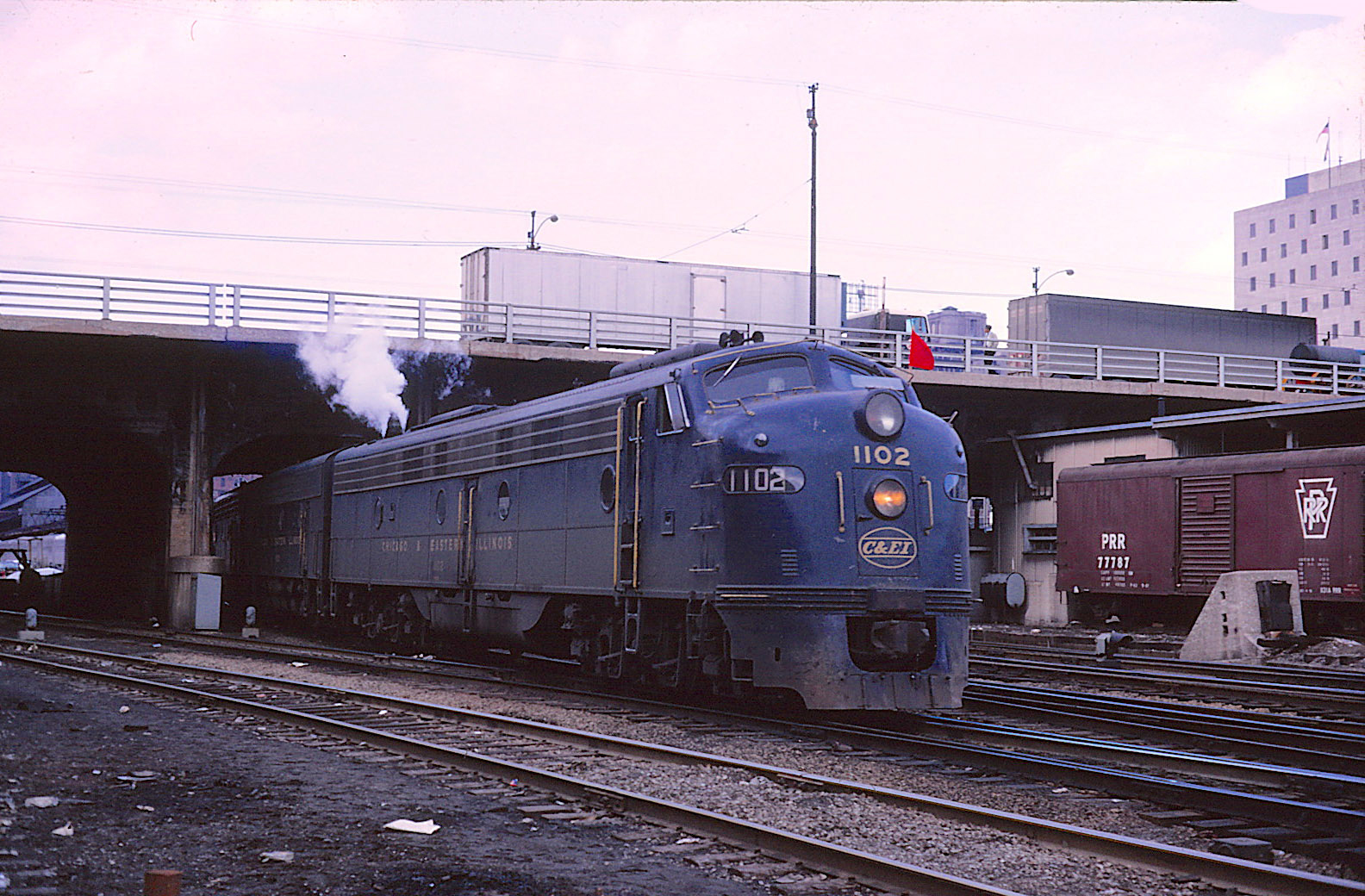
The "Dixie Flyer" makes its afternoon departure from Dearborn Station with C&EI #1102 and
1100 in-charge. Louisville & Nashville power will take the train from Evansville, Indiana
to Birmingham, Alabama and points south. (Owen Leander photo, R. Craig collection).
| 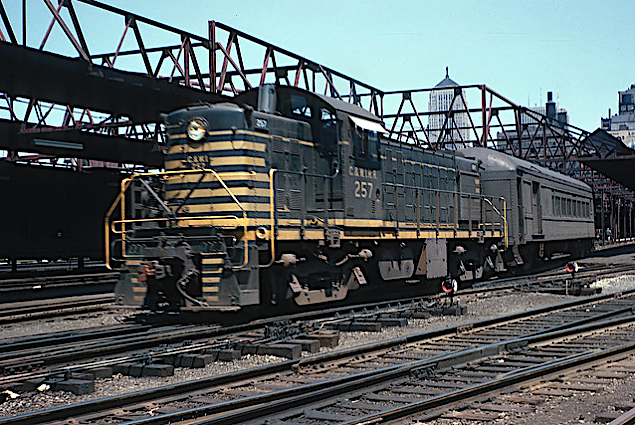
The word "rare" best describes this 19 June 1963 scene by photographer Marty Bernard. First
off, a one-car Chicago & Western Indiana commuter train departs Dearborn Station, and secondly,
a steam generator-equipped Alco RS1 draws the duty.
|
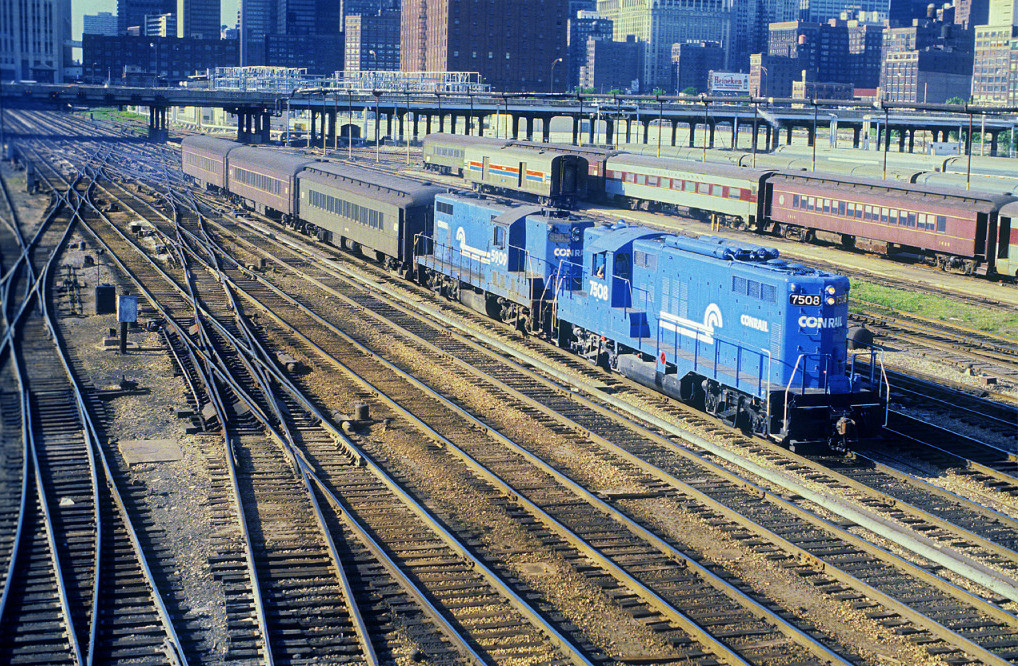
Conrail's only midwest-based commuter train, led by CR GP9 #7508, passes the Roosevelt Bridge
on its way to Valparaiso, Indiana. The once-a-day roundtrip service had been previously
operated by Pennsylvania RR. Amtrak adopted the service in 1979. (Chuck Zeiler photo, June 1978).
| 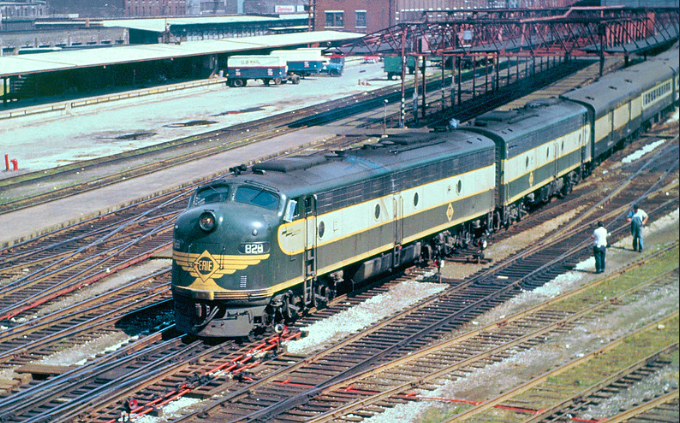
Photographer Chuck Zeiler was on-hand to document the morning departure from Dearborn
Station of Erie RR's "Lakes Cities" on March day in 1960. EMD-buit E8As #828 and 826 lead
the eastbound train towards the final destination in Jersey City, NJ.
|

The only international trains to call on Chicago were Grand Trunk Western's "LaSalle" (trains
#5 & 6). The eastbound is shown here departing Dearborn Station and headed towards Montreal
on the morning of 13 May 1964. (Roger Puta photo / Marty Bernard collection).
| 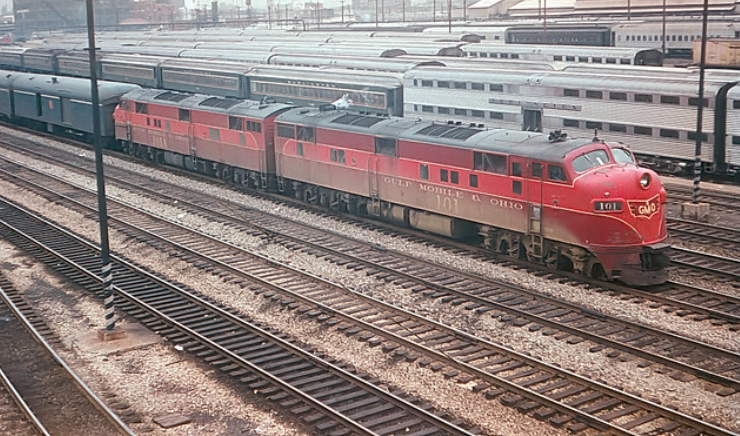
Gulf Mobile & Ohio's northbound "Midnight Special" slowly approaches LaSalle Street Station
on the morning of 13 May 1964. E7As #101 and 101A, which were built by EMD in 1945 delivered
the train from St. Louis. GM&O began replacing mainline steam power at the end of World War
II. (Marty Bernard photo)
|
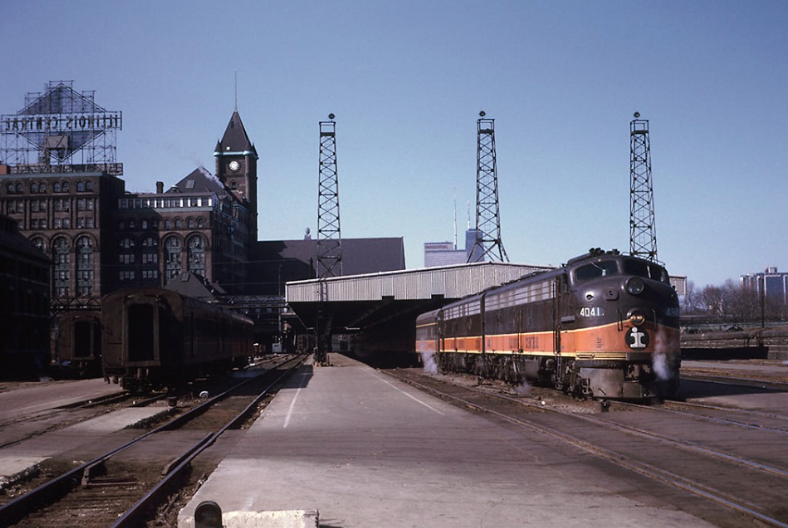
Illinois Central's large Romanesque-style terminal stood at the intersection of Roosevelt Road
and Michigan. This George Hamlin photo from 9 April 1971 shows IC train #5, the "Panama
Limited" with E9A #4041 in the lead, waiting for its late afternoon departure time.
| 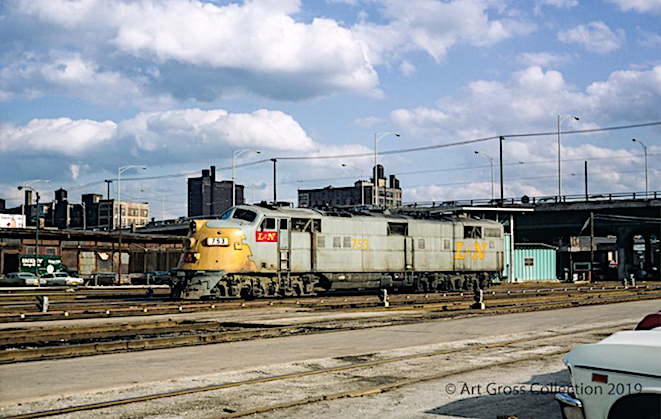
With the 1969 purchase of C&EIs Evansville line, the Louisville & Nashville also gained
responsibility for running "The Danville Flyer" (Trains 3 & 4) between Chicago and Danville.
L&N E6A #753 will lead the train south in April 1970. (Photographer unknown, Art Gross collection).
|
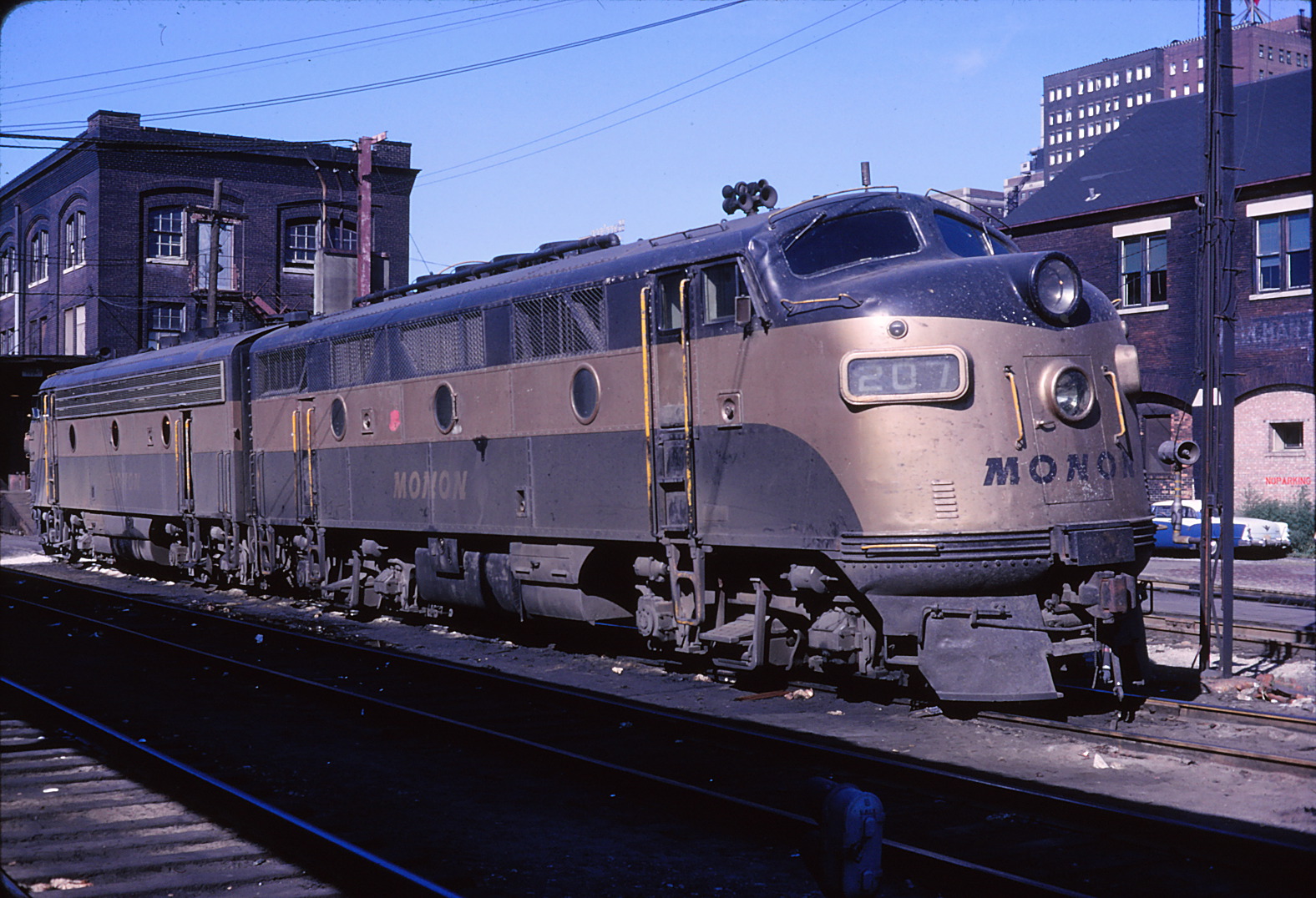
A pair of passenger F3As stand idle at Dearborn Station after delivering the "Throughbred"
(Train #6) on an August 1965 morning. The two EMD cab units will lead afternoon s/b counter-part
Train 6, which has a 4:15 time of departure. (James P. Harper photo, R. Craig collection)
| 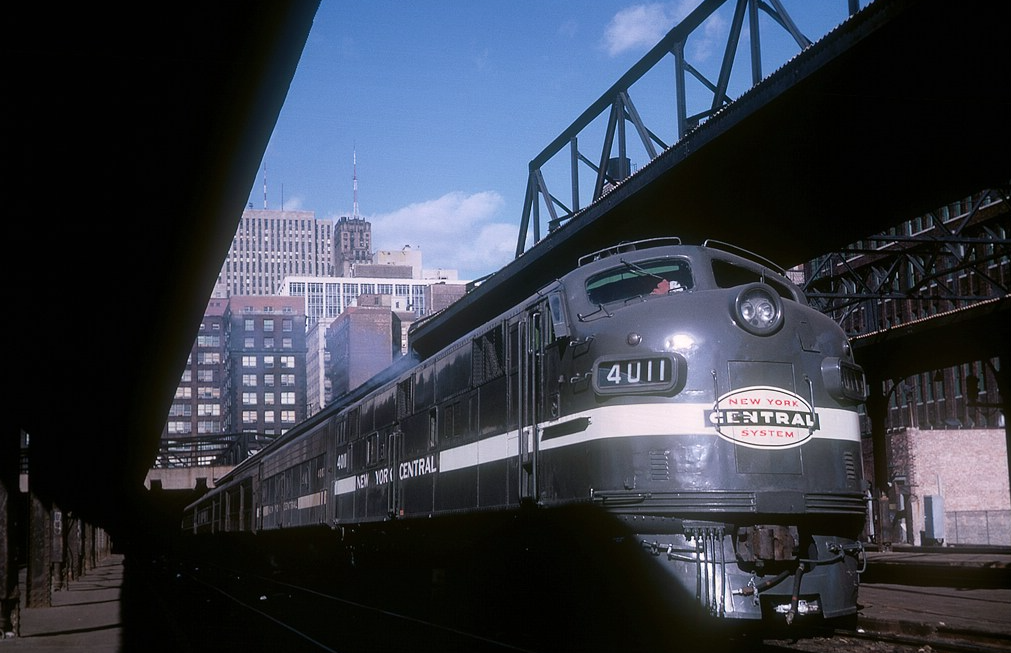
LaSalle Street Station in 1965 was busy most afternoons, between 3:00 and 4:15. New York
Central had five passenger trains scheduled to depart, during that period. The two NYC
E7As in this 31 October photo could be the power for either of the five named trains. (Chuck
Zeiler photo).
|
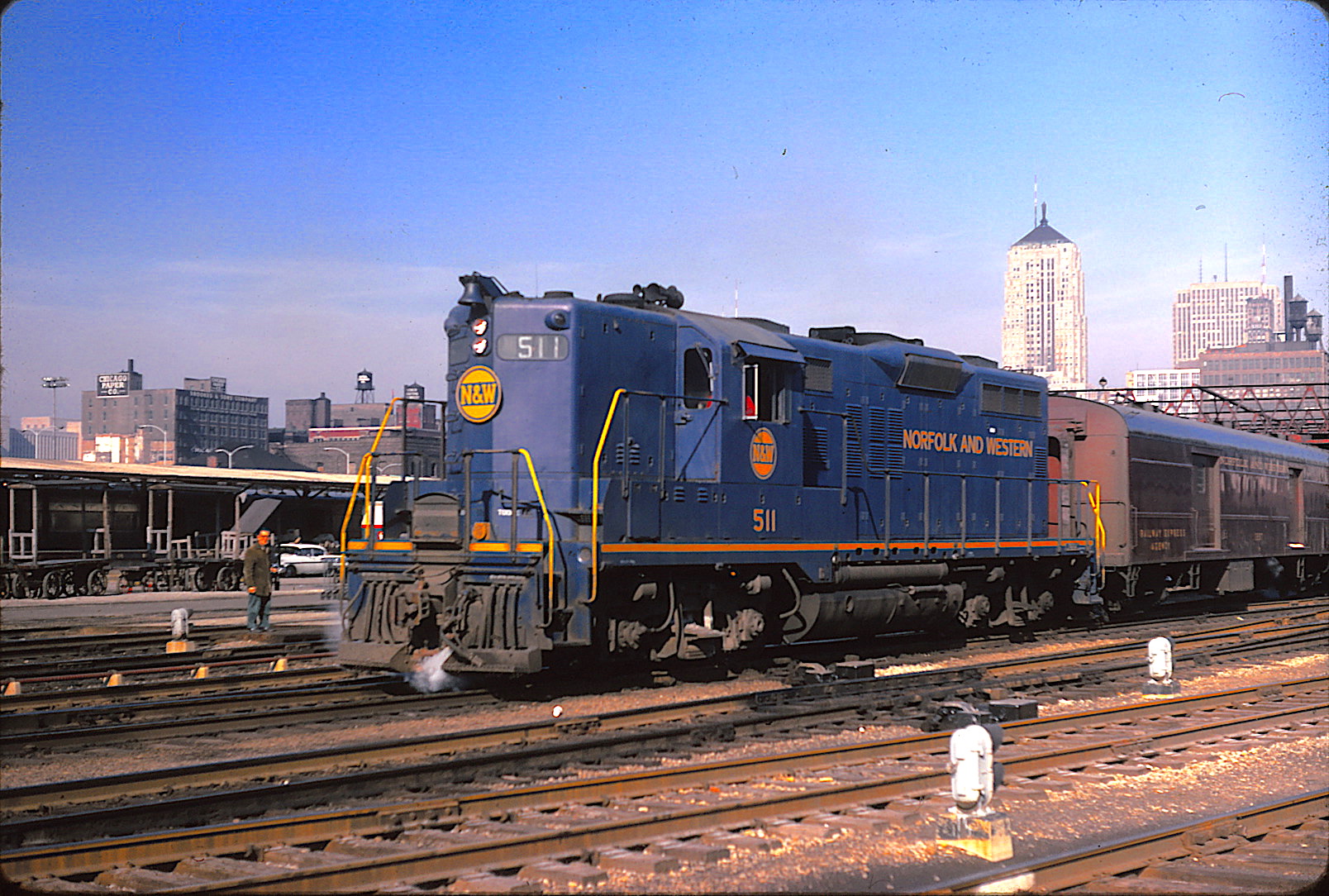
Two years after the N&W + NKP + Wabash merger, N&W passenger GP9 #511, wearing the railroad's
new corporate "Pevler" blue livery, departs Dearborn Station on 12 November 1966 with a
short commuter train to Orland Park. Prior to the merger, the passenger units wore an
attractive tuscan red. (Owen Leander photo)
| 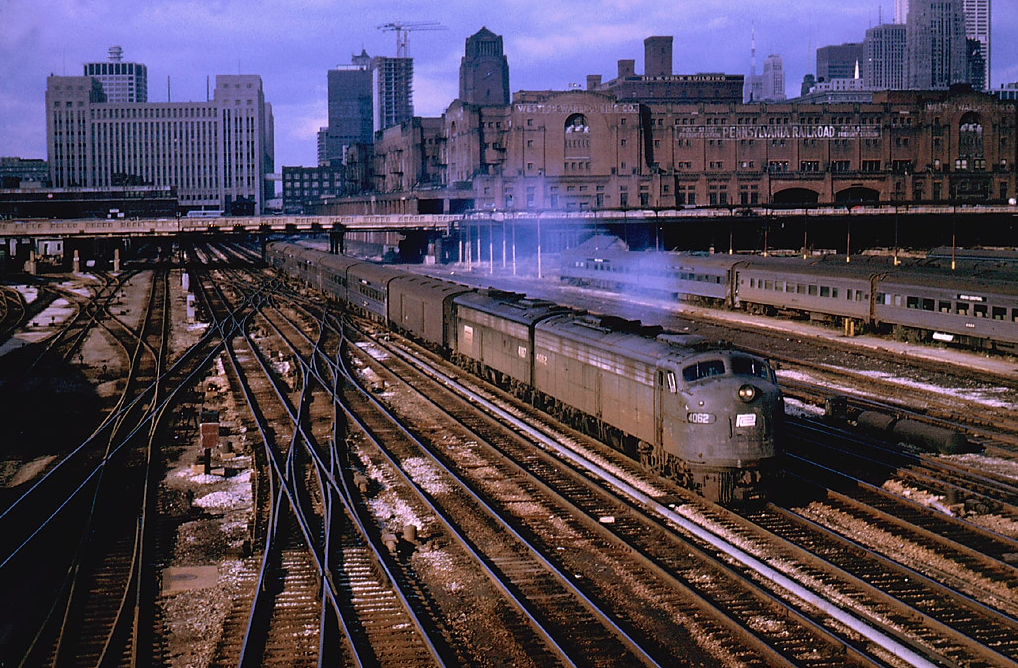
Few railroads benefitted from the creation of Amtrak as much as did the Penn Central; the
cost of hauling passengers was an added burden to the railroad's already poor financial
health. The afternoon of 31 October 1970 sees PC's "New England States" (train 28) depart
Union Station with two E8As leading the way towards New York. (George Hamlin photo).
|
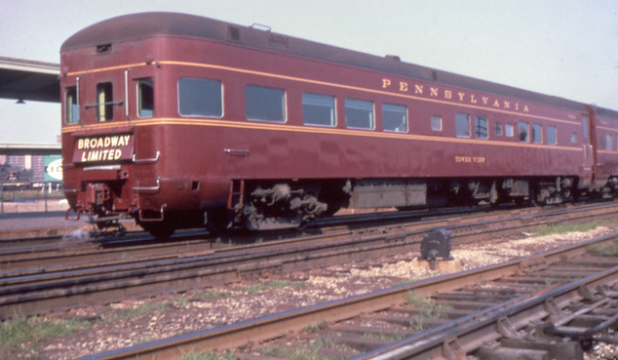
Pennsylvania RR's "Tower View" observation car carries the markers for the railroad's flagship
"The Broadway Limited." The tuscan red and gold-striped streamliner makes an impressive sight
as it departs Chicago's Union Station on its journey to New York City in July 1966.
(Photographer unknown / Cale Leiphart collection)
| 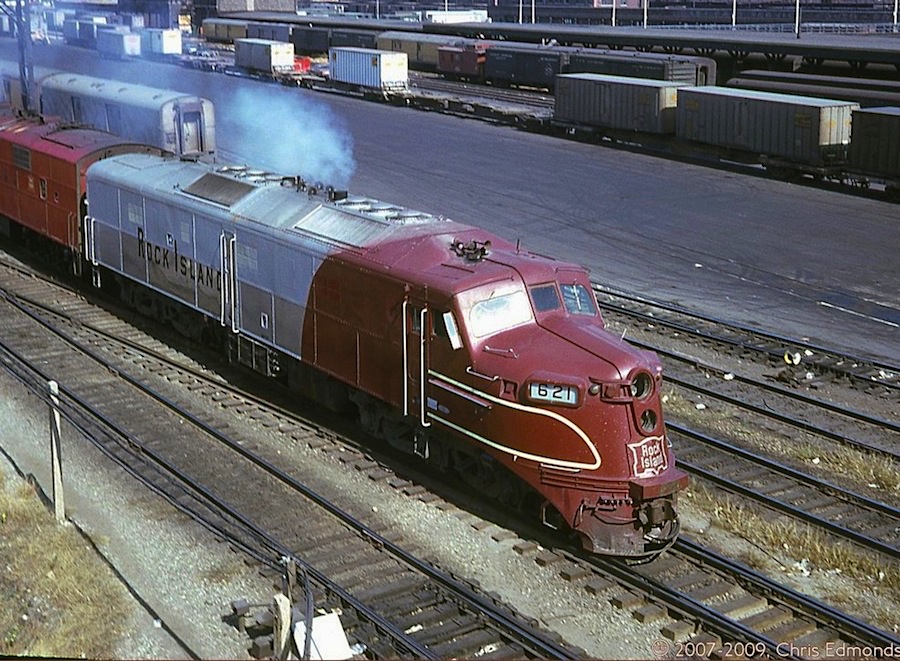
Rock Island #621, one of the oldest mainline diesel road locos in all Chicagoland, had been
re-engined by EMD with a 16-567 powerplant, and interestingly it still emitted clouds of
exhaust - but they were blue, not black. Photographer Chris Edmonds caught the Alco leaving
LaSalle Station.
|
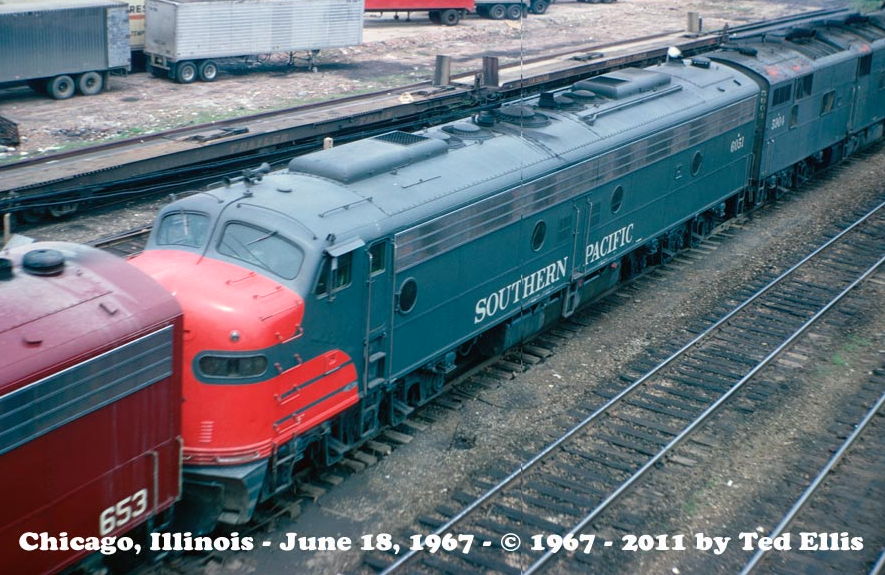
Rock Island's "Golden State" (in partnership with Southern Pacific) arrives at LaSalle Street
Station with both Rock and SP power. The gray and red E8A #6051 now resides at the California
Railroad Museum and wears the famous "daylight" colors. (Ted Ellis Photo)
| 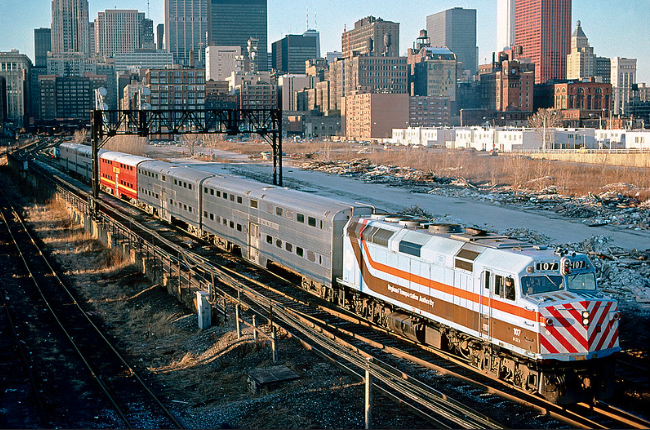
Seconds before ducking under the Roosevelt Bridge on a March day in 1980, RTA F40PH #107
handles an afternoon commuter run on the old Rock Island district. (Chuck Zeiler photo)
|
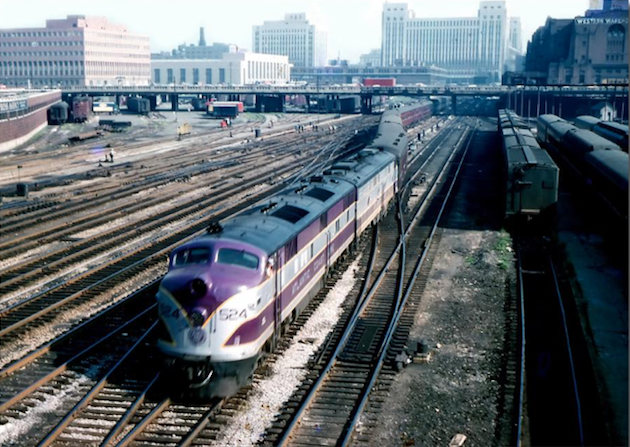
The engineer of ACL 524 backs the "Southwind" (Train #xx) consist into Union Station circa
1960. The every other day Florida-bound train was jointly operated by the Pennsy, Louisville
& Nashville and Florida East Coast railroads. (Tom Bedwell photo)
| 
"Banner Blue" Wabash railroad's flagship train, departs Dearborn Station on 30 May 1963.
Roosevelt Road fades in the background as Train #11 heads for St. Louis; it is led by EMD
E8A #1008 and a PA1 from competitor Alco. (James J. Buckley photo, D.W. Davidson collection)
|
Reference sources:
- Chicago Area Railroad Historians (Facebook group)
- Flickr.com
- Journey to Amtrak by Harold Edmonson
- Rail Pictures. Net
- RR Pictures Archives.Net
- Train Orders.com (Nostalgia & History Forum)
- Zephyrs. Chiefs and Other Orphans by Fred W. Frailey
|
